Intermediates of Cladribine, Carvedilol, Lurasidone, olmesartan,
Risedronate Sodium, Atazanavir, Saxagliptin,
Dabigatran,Dapoxetine,Cefixime,Ceftaroline fosamil and etc.
In the short span of time, we have emerged as most promising
pharmaceutical intermediates manufacturers, chemical intermediates and
bulk drug intermediates suppliers. Our consistent supply, quality
products and dedication towards clients have opened up many
international avenues for our growth.
In addition, the company also can follow the customer's product needs custom synthesis services
MAIN API PRODUCTS USP/BP
PRODUCT NAME
CAS NUMBER
SPEVIFICATION
Azithromycin
117772-70-0
BEP
Cefpirome Sulphate sterile
84957-29-9
USP JP16
Ceftriaxone Sodium (Sterile)
104376-79-6
USP31
Cefotaxime
64485-93-4
USP30
Ciprofloxacin HCL
85721-33-1
USP/BP
Gentamicin sulphate
1405-41-0
BP
Levofloxacin
100986-85-4
USP27
Lincomycin Hydrochloride
859-18-7
EP6.0
Moxifloxacin Hydrochloride
186826-86-8
USP31
Tigecycline
220620-09-7
USP
Linezolid
165800-03-3
EP
Dexamethasone
50-02-2
USP/BP/EP
Methylprednisolone
83-43-2
USP/BP/EP
Dexketoprofen trometamol
156604-79-4
BP2008
Ibuprofen
15687-27-1
BP
Metamizol
68-89-3
DAB
Sulindac
38194-50-2
USP/BP/EP
Naproxcinod
163133-43-5
USP28
Tripelennamine Hydrochloride
154-69-8
USP28
Itraconazole
84625-61-6
USP/BP
Cytarabine
147-94-4
USP31
Leucovorin Calcium
1492-18-8
USP32
Valsartan
137862-53-4
USP30
Telmisartan
144701-48-4
USP31
Rosuvastatin Calcium
147098-20-2
USP/BP
Pitavastatin Calcium
147526-32-7
USP/BP
Fluvastatin
93957-54-1
USP31
Vinpocetine
42971-09-5
EP6.0
Atazanavir
198904-31-3
BP
Rosiglitazone
122320-73-4
USP30
Esomeprazole Magnesium
161973-10-0
USP/BP
Topiramate
97240-79-4
USP31
Fexofenadine HCl
153439-40-8
Inhouse
Bosentan
147536-97-8
Inhouse
D-Cysteine
921-01-7
Inhouse
D-Phenylalanine
673-06-3
Inhouse
Linagliptin
668270-12-0
Inhouse
Rivaroxaban
366789-02-8
USP
Saxagliptin
361442-04-8
USP
Vildagliptin
274901-16-5
USP
Major Pharmaceutical Intermediates
Mica Ester,Pharma Intermediates,Ciprofloxacin Hcl Uses,Active Pharmaceutical Ingredients NINGBO VOICE BIOCHEMIC CO. LTD , https://www.pharma-voice.com
1 After a period of normal use, the fuel vessel is tempered.
Cause: There are too many impurities in the firearm, causing the air flow to fail.
Remedy: Turn off the cooker immediately and clean the lid of the fire.
2-pulse cooker pulse box or wire is burned, this phenomenon occurs in summer.
The reasons are as follows: (1) The pressure in front of the furnace is too large in summer, far exceeding the normal combustion air pressure of the stove, and the burning flame of the stove is too high; (2) The improper adjustment of the fire door and the small intake air volume make the flame too high.
Remedy: (1) In this case, remember to switch the stove switch smaller to allow the flame to burn in a safe condition; (2) Adjust the damper to increase the amount of intake air so that the flame will burn normally (the flame is blue and short And strong).
3 After the stove has been used for a long time, re-enable it, and the rotary switch will not move.
Cause: The impurities in the switch are dry and the switch knob is rusted.
Remedy: Dismantle and clean switch, oil, and reinstall it.
4 After the fire, the pulse still blew "å±, å±, ã€, ã€, ã€" and the sound was still igniting the fire on the striker.
Cause: Ignition switch spring is not returned, causing the ignition switch not to be fully closed.
Remedy: Lift the rotary switch to reset.
5 After using the cooker for a period of time, the pulse becomes slower and the spark becomes smaller.
Cause: The battery voltage is not enough.
Remedy: Replace with new battery.
Second, biogas desulfurizer common faults and troubleshooting
1 The desulfurizer shell softens or even burns out.
Cause: A large amount of oxygen in the air reacts with the desulfurizer in the desulfurizer and releases strong heat.
Remedy: Stop the oxygen in the air from entering the desulfurization bottle (close the purifier switch or stove switch when removing the material).
2 The phenomenon of poor airflow after installing desulfurizers.
Causes: During the transportation process, desulfurizer particles roll into the desulfurizer inlet and outlet holes and trap the gas pipeline to make the air flow poor.
Remedy: Shake the desulfurization bottle to make the pipe open.
(3) Causes of leakage of desulfurizer: (1) The sealing gasket in the desulfurizer cap is not installed; (2) The connection between the gas distribution pipe and the desulfurizer is badly sealed.
Remedy: (1) Remove the desulfurizer bottle cap, place the sealing washer in the inner cap straight, reinstall and tighten; (2) Connect the pipe joint and tighten the clamp.
Third, the biogas pressure gauge common faults and troubleshooting
1 The adjustment method for indicating the needle cannot be reset: Open the pressure gauge cover and remove the indicator needle at the zero position. (If this method still can not return to normal, the pointer may be connected to the wheel to derail, and such failures can only be returned to the factory for repair)
2 Leakage in the pressure gauge: The main reason for this type of failure is that the metal film box is not welded or corroded, and this phenomenon can only be returned to the factory for maintenance.
3 Low liquid column pressure gauge common faults and troubleshooting methods Symptoms: The main performance is to show that the scale within the glass tube does not move, the liquid level can not rise and fall with the pressure change.
The reasons are as follows: (1) The air in the piston of the balancer is not drained; (2) The pressure in the piston is too low to cause its pressure to be insufficient, so that the piston is not able to work properly due to deformation.
Remedy: Pour all the liquid in the balancer, and refill the liquid to completely eliminate the air in the piston, so that the liquid level and the glass tube can be zero scale.
4 The main fault of the lifting type biogas pressure gauge is that the individual pressure gauges are not handled properly due to the silicone piston joints, and the leakage occurs. Although there are few reflections of such failures at present, this situation cannot be eliminated and can only be replaced.
Fourth, the maintenance of the regulator
1 Check for leaks: If there is a leak, you can plug in the leak connector and tighten the clamp at the hose port.
2 Desulfurization agent regeneration and replacement: If the new desulfurizer is used for 6 months, if the hydrogen sulfide content in the biogas is particularly high, it should be taken out of the desulfurizer to regenerate it. After a day, the desulfurizer can be reused in the desulfurizer. Month, then need to replace the new desulfurization bottle. (Regeneration process: The desulphurization agent is poured out from the desulfurizer and evenly and loosely spread on a flat, clean, back-yang, and ventilated site so that it can fully contact the air. After one day, it can be used.)
3 Check the aging condition of the hose: After one year of use, check whether the hose inside the purifier is cracked or damaged. If yes, please replace the hose promptly; if not, check it regularly to prepare for any unexpectedness.
Fifth, the use of regulators should pay attention to matters
1 Once the modulator is used, air must not be allowed to enter the desulfurizer to prevent a regenerative reduction reaction in the desulfurizer (this reaction will produce a strong exothermic process). When the digester discharges, the modulator switch must be turned off (separately installed separate desulphurizers need to turn off the cooktop main switch) to prevent the desulfurizer operation accident due to a large amount of air entering (to solve the negative result caused by discharge The problem of pressure can be removed by connecting the gas hose on the digester air pipe).
2 Modulator should be used in environments greater than 0°C.
Items Descripation
Structure
Application
MICA ESTER
CAS No: 246035-38-1
Purity: ≥98%

For Cefixime
EHATA
CAS No: 64485-82-1
Purity: ≥98%

For Ceftazidine
2-Chloroadenine
CAS No: 1839-18-5

For Cladribine, Fludarabine et al
Bicyclo(2,2,1)Heptane-2,3-di-exo-carboximide
CAS No: 14805o-29-9

For Lurasidne
(R,R)-1,2-Bis(methanesulfonyloxy methyl)Cyclohexane
CAS No: 186204-35-3

For Lurasidone
3-(Piperazin-1-yl)benzol[d] isothiazole
CAS No: 87691-87-0
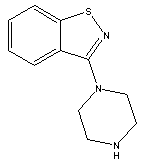
For Lurasidone
Trityl olmesartan
CAS No: 144690-92-6
Purity: ≥98%
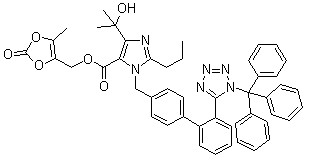
For olmesartan
3-Acetyl Pyridine
CAS No: 350-03-8

For Risedronate Sodium
3-(AceticAcid)pyridine HCL
CAS No: 6419-36-9

For Risedronate Sodium
Risedronic Acid
CAS No: 105462-24-6

For Risedronate Sodium
3-Hydroxy-1-adamantyl-D-Glycine
CAS No: 709031-29-8

For Saxagliptin
(1s,3s,5s)-3-(aminocarbonyl)-2-azabicyclo(3,1,0) hexane-2-carboxylic acid tert-butyl ester
CAS No: 361440-67-7

For Saxagliptin
(S)-N-Boc-3- hydroxy-adamantylglycine
CAS No: 361442-00-4
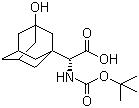
For Saxagliptin
2-Azabicyclo[3.1.0] hexane-3-carbonitrile, (1s,3s,5s)-
CAS No: 866083-42-3

For Saxagliptin
Ethyl 3-(pyridin-2-ylamino) propanoate
CAS No: 103041-38-9

For Dabigatran
N-(4-Cyanophenyl) glycine
CAS No: 42288-26-6
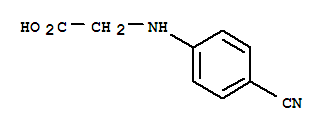
For Dabigatran
4-methylamino-3-nitrobenzoic Acid
CAS No: 41263-74-5

For Dabigatran
S-3-Amino-3-phenylpropanoic acid ethyl ester HCL
CAS No: 167834-24-4

For Dapoxetine
(S)-3-Amino-3-Phemylpropan -1-ol
CAS No: 82769-76-4
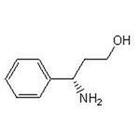
For Dapoxetine
(S)-3-Dimethylamino-3-Phemylpropanol
CAS No: 82769-75-3

For Dapoxetine
4-{4-[4-(hydroxydiphenylmethyl)-1-piperidinyl]-1-butynil}-α,α-dimethyl benzene acetic acid
CAS No: 832088-68-3
For Fexofenadine HCl
Methyl 2-(4-(4-chlorobutanoyl)phenyl)-2-methylpropanoate
CAS No:154477-54-0

For Fexofenadine HCl
5-Bromo-2-chlorophenyl)(4-ethoxyphenyl)methanone
CAS No 461432-22-4

For Dapagliflozin
4-(5-Bromo-2-chlorobenzyl)phenyl ethyl ether
CAS No :461432-23-5
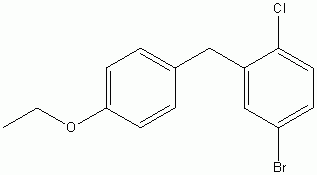
For Dapagliflozin
Failure of biogas auxiliary products
First, the failure of biogas stove and remove it
